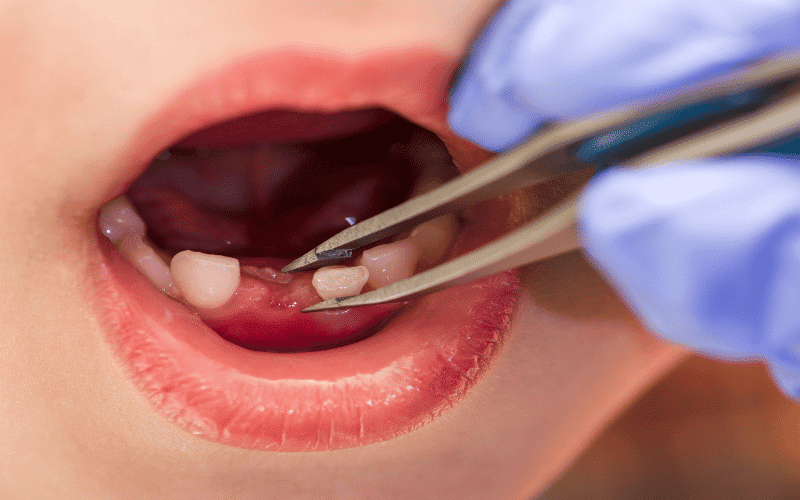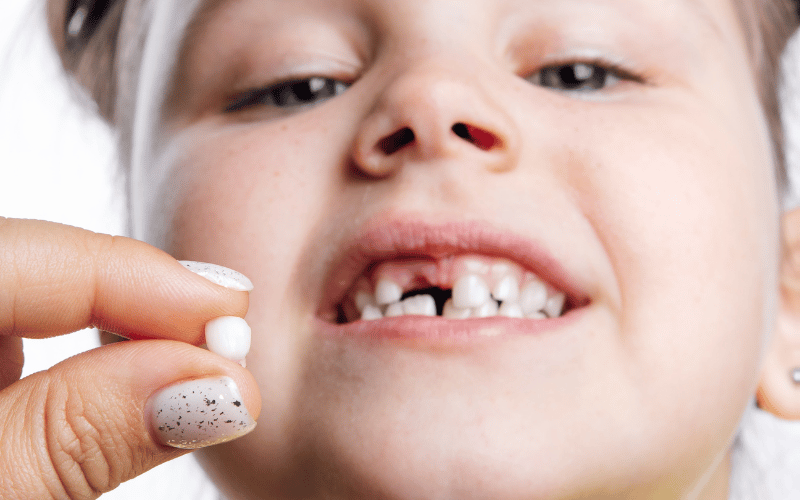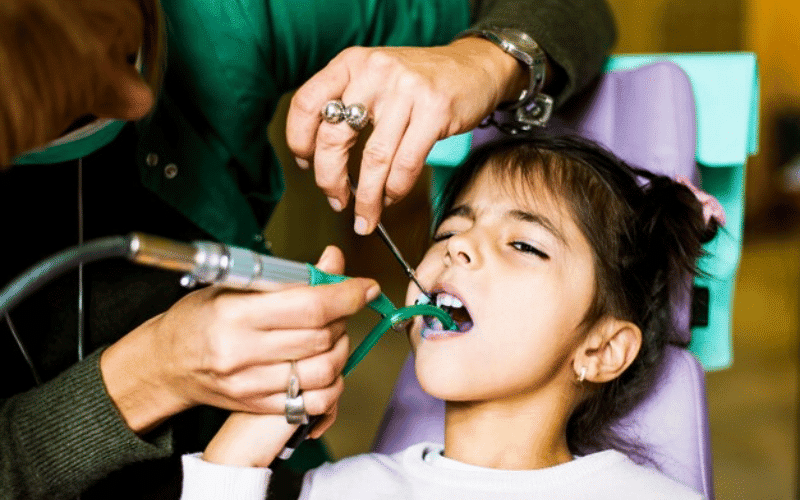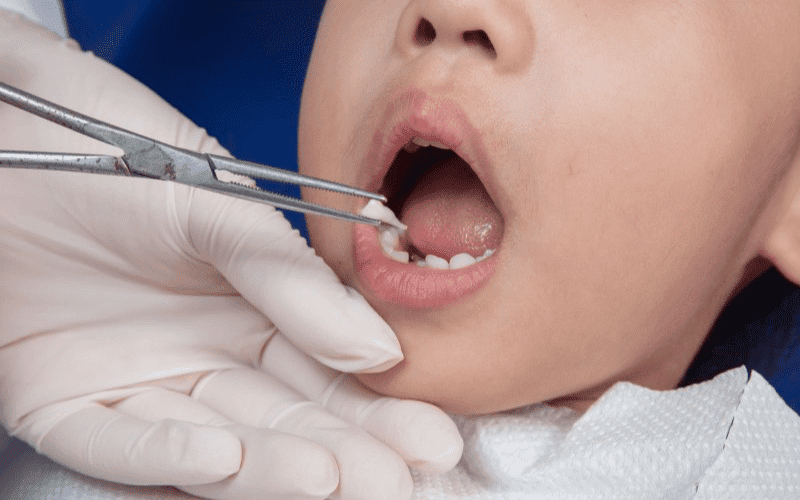Managing Pain After Children’s Tooth Extraction

Imagine your child’s sweet smile turning into a grimace of pain after a tooth extraction. It’s a scenario that can wrench any parent’s heart. However, with the right knowledge and strategies, you can ease their discomfort and ensure a smoother recovery process. In this guide, we’ll explore practical tips and gentle remedies to help manage pain after children’s tooth extraction, providing both comfort and relief.
Understanding Tooth Extraction
Tooth extraction in children is sometimes necessary due to various reasons such as severe decay, overcrowding, or orthodontic treatment requirements. While these procedures are routine, they can still cause discomfort and soreness afterward. It’s essential to be prepared and equipped with strategies to ease your child’s discomfort during the recovery phase.
Tooth Extraction Recovery Timeline
Understanding the typical recovery timeline after children’s tooth extraction can help you manage your child’s post-operative care effectively. While every child’s experience may vary slightly, the following timeline provides a general overview of what to expect during the recovery process:
Immediately After Extraction (Day 1)
- Bleeding: Some bleeding is normal immediately after the extraction. Your child’s dentist will provide gauze to bite down on to help control bleeding. Change the gauze pads as directed by your dentist until the bleeding subsides.
- Numbness: The extraction site and surrounding areas may remain numb for a few hours following the procedure due to local anesthesia. Ensure your child doesn’t accidentally bite their lip, cheek, or tongue while they are still numb.
- Rest: Encourage your child to rest and avoid strenuous physical activities for the remainder of the day. Light activities such as reading, watching TV, or playing quiet games are suitable.
Day 1 to Day 3
1. Pain Management: Your child may experience discomfort or mild pain in the extraction area as the anesthesia wears off. Follow your dentist’s instructions for pain management, which may include prescribed or over-the-counter pain medication.
2. Swelling: Some swelling and bruising around the extraction site are normal. Apply a cold compress to the outside of the cheek in intervals to help reduce swelling and discomfort.
3. Soft Diet:
- Stick to a soft diet to avoid irritating the extraction site.
- Offer cool, soothing foods like yogurt, applesauce, mashed potatoes, and smoothies.
- Avoid hot, spicy, or crunchy foods that may cause discomfort.
4. Oral Hygiene: Encourage gentle oral hygiene practices. Your dentist may recommend rinsing the mouth with salt water or a prescribed mouthwash to keep the extraction site clean and promote healing.
Day 4 to Day 7
- Reduced Discomfort: By this time, your child’s discomfort should gradually decrease. They may still experience some sensitivity or tenderness around the extraction site, but it should continue to improve.
- Healing Progress: The extraction site will start to heal, and any residual swelling or bruising should begin to subside. Continue to monitor the area for signs of infection, such as increased pain, swelling, or pus discharge, and contact your dentist if you have any concerns.
- Return to Normal Activities: Your child can gradually resume normal activities as they feel comfortable. However, continue to avoid vigorous physical activities or contact sports to prevent injury to the healing area.
Tips for Managing Pain
1. Medication Management
Your dentist may prescribe pain relievers to alleviate discomfort. Follow the dosage instructions carefully and administer them as directed. Over-the-counter pain relievers like ibuprofen or acetaminophen can also help, but consult with your dentist or pediatric dentist before giving any medication to your child.
2. Cold Compress
Applying a cold compress to the outside of the cheek near the extraction site can help reduce swelling and numb the area, providing relief from pain. Wrap a cold pack in a cloth and gently apply it in intervals of 15-20 minutes. Ensure that you do not apply ice directly to the skin to prevent ice burns.
3. Soft Diet
Encourage your child to consume soft, easy-to-chew foods during the recovery period. Avoid hot or spicy foods that may irritate the extraction site. Opt for cool, soothing options like yogurt, mashed potatoes, or smoothies to minimize discomfort while ensuring adequate nutrition.
4. Oral Rinses
Your dentist may recommend gentle saltwater rinses to keep the extraction site clean and promote healing. Mix a teaspoon of salt in a glass of warm water and have your child rinse their mouth gently after meals. This helps to reduce the risk of infection and soothes the gums.
5. Avoid Straws and Sucking
Advise your child to avoid using straws or engaging in activities that involve sucking, such as drinking from a water bottle or sucking on candies. Sucking can create negative pressure in the mouth. As a result, it potentially dislodges the blood clot that forms in the extraction site, leading to a painful condition called dry socket.
6. Proper Rest
Encourage your child to get plenty of rest during the recovery period. Physical activity should be limited, especially in the first 24 hours after the extraction, to prevent bleeding and discomfort. Allow your child to relax and take it easy while their body heals.
7. Distraction Techniques
Please keep your child’s mind off the discomfort by engaging them in activities they enjoy, such as watching their favorite movies, reading books, or playing gentle games. Distraction can be a powerful tool in managing pain perception and helping your child feel more comfortable.
Managing pain after children’s tooth extraction requires patience, understanding, and a gentle touch. By following these tips and providing loving support, you can help your child navigate this temporary discomfort with ease. Remember to consult with your pediatric dentist if you have any concerns or questions regarding your child’s recovery. Together, we can ensure a smooth journey to a healthier, happier smile for your little one. With the right strategies and a compassionate approach, you can help them feel more comfortable and at ease during this time.



